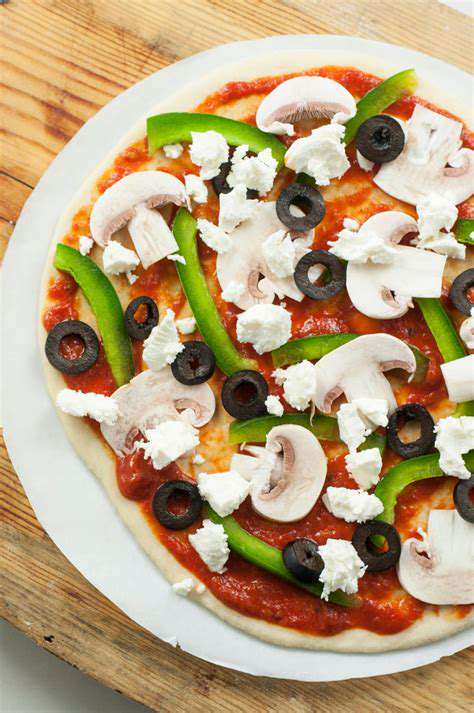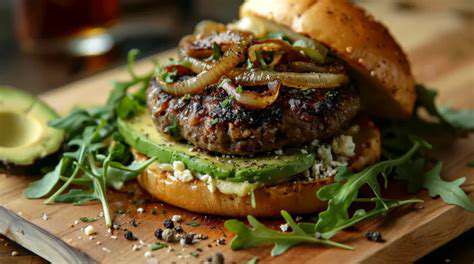Types of Potatoes and How to Cook Them
Red Potatoes: A Delicious Addition to Your Plate
With their eye-catching hue and firm-yet-tender bite, red potatoes bring both visual appeal and satisfying texture to the table. Their naturally sweet, earthy notes make them incredibly adaptable - equally at home in rustic roasted medleys as they are in elegant potato salads. Unlike their starchier cousins, red potatoes maintain a delightful creaminess when cooked, practically dissolving on the tongue when prepared correctly.
Nutritionally, these ruby-skinned gems pack a punch. They're loaded with potassium for heart health, vitamin C for immunity, and fiber for digestion - making them as good for your body as they are for your taste buds. The vibrant skin isn't just pretty; it contains valuable nutrients and adds textural contrast to dishes. Whether you're boiling them for a summer picnic salad or frying them for a cozy breakfast hash, red potatoes consistently deliver both flavor and visual drama to your meals.
Preparing and Cooking Red Potatoes
Getting red potatoes ready for the pan requires some know-how. Their dense structure means they'll keep their shape during cooking - perfect when you want distinct pieces in your salad or stew. Always give them a thorough scrub under cold water to remove any garden grit, but be gentle to avoid bruising the delicate flesh. Damaged potatoes can turn mealy and unappetizing, so handle them with care.
The cooking method you choose dramatically changes the final result. Roasting caramelizes their natural sugars, creating crispy edges with creamy centers. Boiling softens them perfectly for mashing or adding to soups. For ultimate indulgence, frying transforms them into golden nuggets with crackling skins. Each technique unlocks different dimensions of flavor and texture, so experiment to find your favorite preparation.
Consider your final dish when selecting a cooking method. Planning a colorful roasted vegetable platter? Red potatoes will hold their shape and add visual pop. Making a velvety potato soup? Boil them until they're fall-apart tender. Understanding these nuances lets you harness red potatoes' full potential in every culinary creation.
Don't limit these versatile tubers to side dishes. They shine in grain bowls, absorb dressings beautifully in salads, and stand up to long simmering in stews. Their ability to pair with everything from delicate herbs to bold spices makes them a kitchen workhorse. Think of them as a culinary blank canvas waiting for your creative touch.
From their striking appearance to their adaptable nature, red potatoes deserve a permanent spot in your cooking repertoire. Mastering their preparation opens up endless possibilities, from simple weeknight sides to showstopping centerpieces. When treated with understanding and care, these colorful spuds will elevate every meal they grace.
Fingerling Potatoes: Tiny Treasures for Flavorful Dishes
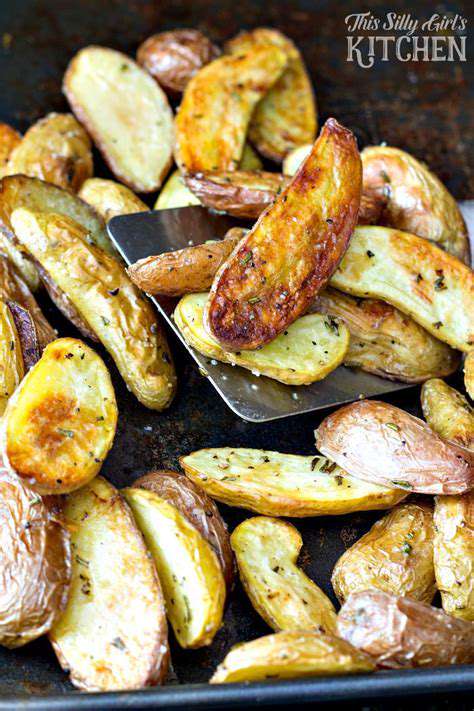
Planting Fingerlings
These slender, finger-shaped potatoes bring whimsy and flavor to any garden. Their compact size means they mature faster than larger varieties, making them ideal for gardeners eager for quick results. Soil preparation makes all the difference - enrich your planting beds with compost or well-rotted manure to create the loose, nutrient-rich environment fingerlings crave. The soil should feel like a wrung-out sponge - moist but never soggy - to prevent tuber rot.
Give each plant enough room to stretch its roots. Crowded conditions lead to puny harvests, so follow spacing recommendations carefully. Proper spacing ensures each plant gets adequate sunlight and nutrients, resulting in a bounty of perfectly formed fingerlings come harvest time.
Cultivating Fingerling Potatoes
Consistent moisture is crucial during the growing season. Water deeply when the top inch of soil dries out, but avoid creating standing water. Mulching helps maintain even soil moisture and temperature while suppressing weeds. Watch for signs of stress like wilting or yellowing leaves, which indicate watering adjustments are needed.
Harvesting Fingerling Potatoes
After about 10-12 weeks, your fingerlings will be ready when the plants begin to yellow and die back. Use your hands or a garden fork to gently unearth these culinary treasures, being careful not to pierce the delicate skins. The thrill of discovering clusters of perfectly formed fingerlings never gets old.
Sort your harvest immediately, setting aside any damaged tubers for immediate use. Cure the undamaged potatoes in a cool, dark place with good air circulation for about two weeks before storage. This process thickens their skins and improves their keeping quality.
Caring for Fingerling Potatoes
Regular maintenance ensures a healthy crop. Stay on top of weeds that compete for resources, and replenish mulch as needed to maintain soil moisture. Consider using straw or shredded leaves as mulch - these organic materials break down over time, further enriching your soil. Rotate your potato crops annually to prevent disease buildup in the soil.
Mastering the Art of Potato Cooking

Understanding Different Types of Potatoes and Their Cooking Properties
The potato family offers diverse options, each with unique characteristics that determine their best uses in the kitchen. Floury varieties like Russets break down beautifully when cooked, making them ideal for light, fluffy mashed potatoes or perfect baked potatoes. In contrast, waxy types such as Red Bliss maintain their structural integrity, excelling in potato salads or gratins where you want distinct pieces.
Pay attention to moisture content too. High-moisture potatoes can turn to mush if overcooked, while drier varieties might need extra cooking time. Selecting the right potato for your dish is half the battle in achieving perfect results. This knowledge separates mediocre potato dishes from exceptional ones.
Mastering Basic Cooking Techniques for Potatoes
Perfecting fundamental methods lays the foundation for potato mastery. When boiling, start with cold salted water and maintain a gentle simmer - this ensures even cooking from edge to center. For roasting, cut pieces uniformly and don't overcrowd the pan, allowing each piece to caramelize properly. The sizzle of potatoes hitting hot oil signals the start of perfect fries or hash browns - just maintain consistent oil temperature for even browning.
Temperature control separates adequate cooking from exceptional results. Use a thermometer when frying, and learn to recognize visual cues like golden edges when roasting. These skills transform ordinary spuds into extraordinary fare.
Creative Ways to Elevate Your Potato Dishes
Once you've mastered techniques, let creativity take over. Infuse oils with garlic or herbs to toss with roasted potatoes. Combine textures by topping creamy mashed potatoes with crispy shallots or pancetta bits for contrast. Presentation matters too - arrange colorful potato varieties in alternating patterns or pipe duchess potatoes into elegant swirls.
Don't shy away from global flavors either. Toss roasted potatoes with za'atar and lemon, or spice them up with chili and lime. The humble potato becomes a culinary chameleon when you apply imagination, adapting to any cuisine or occasion with delicious results.
Read more about Types of Potatoes and How to Cook Them
Hot Recommendations
- Traditional Foods for Day of the Dead
- Food Etiquette in Italy: Pasta Rules!
- Best Family Friendly Restaurants with Play Areas in [City]
- Review: The Best [Specific Dessert] Place in [City]
- Top Ice Cream Parlors in [City]
- Traditional Foods for Halloween
- The History of the Potato in Ireland
- Best Vegan Pizza Joints in [City] [2025]
- Best Bakeries for Sourdough Bread in [City]
- Food Culture in Argentina: Asado and Wine
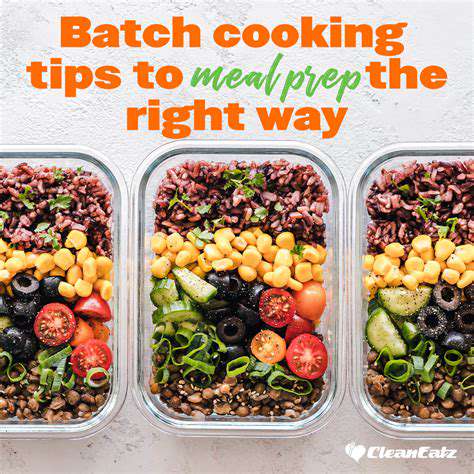
![Review: [Specific Wine Bar Name] with Food Pairing](/static/images/28/2025-05/FinalThoughts3AAMust-VisitforWineEnthusiastsandFoodies.jpg)

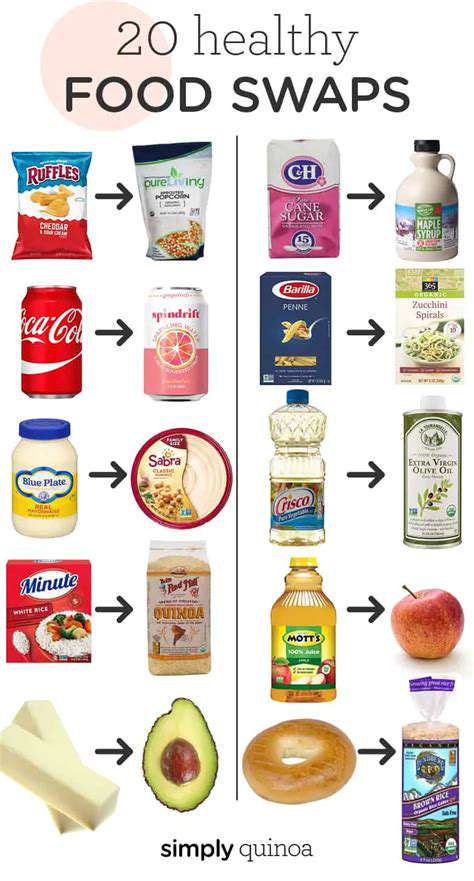

![Best Knife Sets for Your Kitchen [2025]](/static/images/28/2025-05/HandleErgonomics3AComfortandControl.jpg)

![Review: The Best [Cuisine] Outside [Country of Origin]](/static/images/28/2025-05/BeyondtheMainstream3ADiscoveringHiddenGems.jpg)
